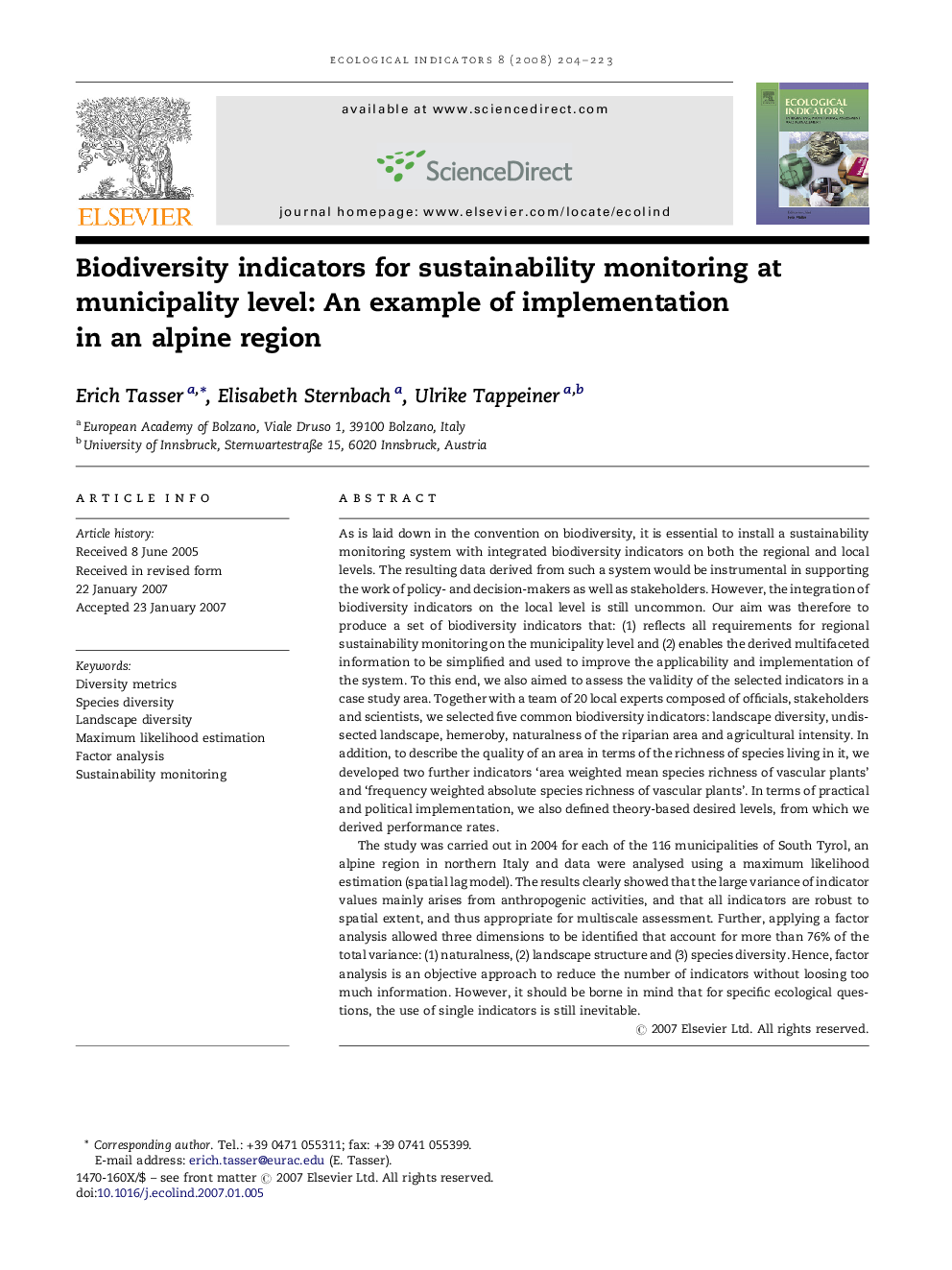| کد مقاله | کد نشریه | سال انتشار | مقاله انگلیسی | نسخه تمام متن |
|---|---|---|---|---|
| 4374536 | 1303178 | 2008 | 20 صفحه PDF | دانلود رایگان |

As is laid down in the convention on biodiversity, it is essential to install a sustainability monitoring system with integrated biodiversity indicators on both the regional and local levels. The resulting data derived from such a system would be instrumental in supporting the work of policy- and decision-makers as well as stakeholders. However, the integration of biodiversity indicators on the local level is still uncommon. Our aim was therefore to produce a set of biodiversity indicators that: (1) reflects all requirements for regional sustainability monitoring on the municipality level and (2) enables the derived multifaceted information to be simplified and used to improve the applicability and implementation of the system. To this end, we also aimed to assess the validity of the selected indicators in a case study area. Together with a team of 20 local experts composed of officials, stakeholders and scientists, we selected five common biodiversity indicators: landscape diversity, undissected landscape, hemeroby, naturalness of the riparian area and agricultural intensity. In addition, to describe the quality of an area in terms of the richness of species living in it, we developed two further indicators ‘area weighted mean species richness of vascular plants’ and ‘frequency weighted absolute species richness of vascular plants’. In terms of practical and political implementation, we also defined theory-based desired levels, from which we derived performance rates.The study was carried out in 2004 for each of the 116 municipalities of South Tyrol, an alpine region in northern Italy and data were analysed using a maximum likelihood estimation (spatial lag model). The results clearly showed that the large variance of indicator values mainly arises from anthropogenic activities, and that all indicators are robust to spatial extent, and thus appropriate for multiscale assessment. Further, applying a factor analysis allowed three dimensions to be identified that account for more than 76% of the total variance: (1) naturalness, (2) landscape structure and (3) species diversity. Hence, factor analysis is an objective approach to reduce the number of indicators without loosing too much information. However, it should be borne in mind that for specific ecological questions, the use of single indicators is still inevitable.
Journal: Ecological Indicators - Volume 8, Issue 3, May 2008, Pages 204–223